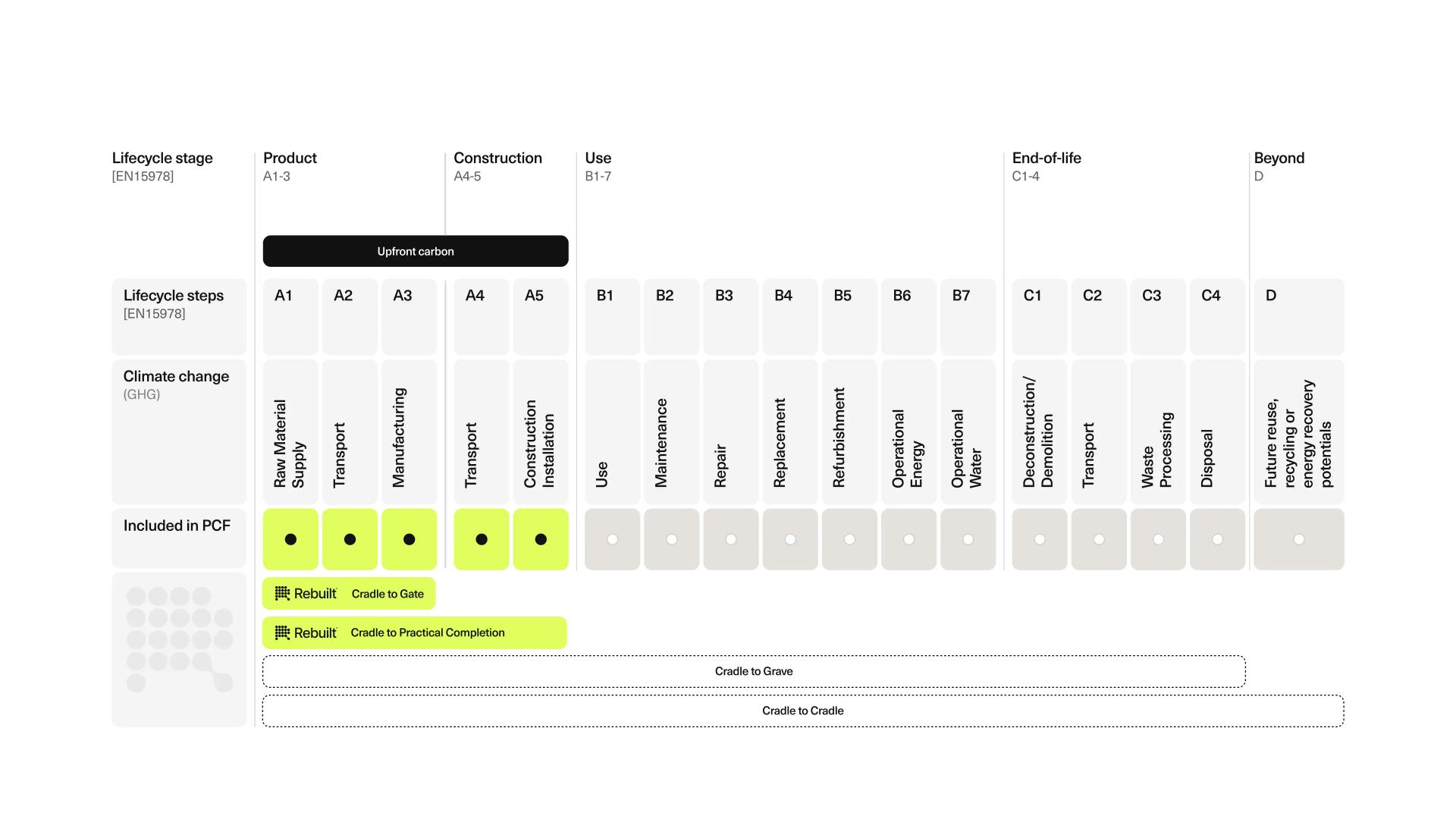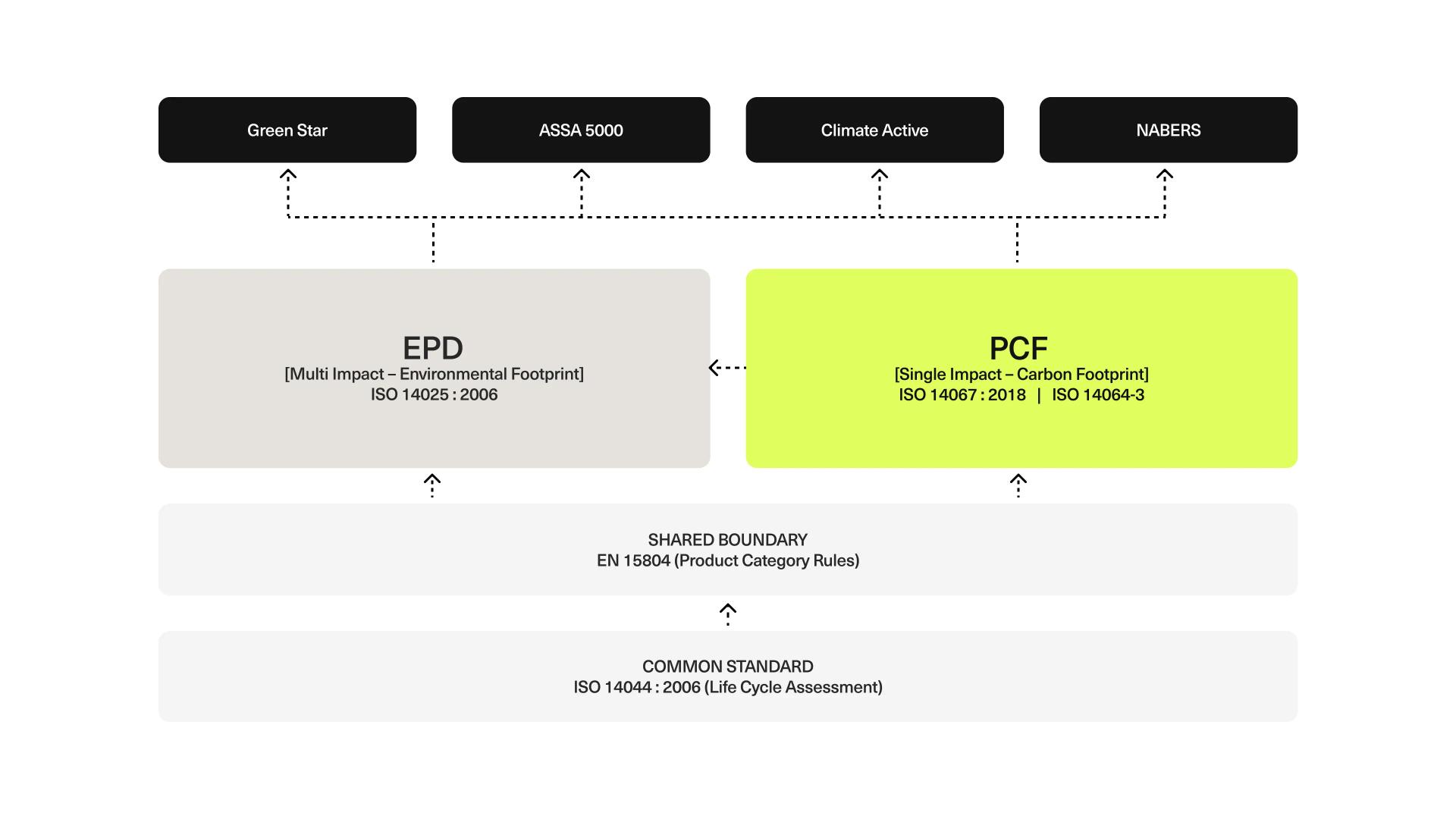What you need to know about product carbon footprints
19 February 2025
A Product Carbon Footprint (PCF) is a life cycle assessment that provides a detailed analysis of a product’s impact on greenhouse gas creation across its lifecycle.
Product Carbon Footprints cover the same lifecycle stages as they would in other LCA analyses. For most product manufacturers this is the product stage A1-A3 or cradle-to-gate. Rebuilt reports also offer an option for customers to add A4-A5 should a cradle-to-practical-completion or upfront carbon analysis be required.


PCFs are used globally
This globally recognised methodology is widely used by companies, governments, and standards agencies to assess and compare the embodied carbon emissions in goods and services - the things that we buy and the services we use.
Product carbon footprints are becoming increasingly important in demonstrating compliance with corporate and regulatory sustainability reporting requirements in a credible and consistent way.
Product carbon footprints are acceptable under multiple international legislation frameworks and aligned to LCA frameworks.
In Australia, independently verified PCFs are acceptable under NABERS Embodied Carbon rules, and under Climate Active product certifications and can contribute to reporting requirements under Planning regulations.
With the introduction of climate disclosure legislation under the Corporations Act in 2025, many corporations are now expecting their supply chain to provide them with PCFs on an annual basis to support their mandatory climate disclosure reporting requirements.
When to choose a PCF over other environmental impact reports
Because a PCF only measures the single criteria of carbon, rather than the multiple environmental impacts of a full LCA or EPD, it can act as a lower cost entry point to a full LCA or EPD. A PCF meets compliance obligations whilst allowing for upgrade to a multi-criteria impact analysis if later required.
How PCFs align to international standards
A product carbon footprint calculation is defined under ISO 14067 and is aligned to international standards, including the Greenhouse Gas Protocol and other widely used Lifecycle Carbon Inventory (LCI) calculation methodologies (ISO 14040, ISO 14044 and the ISO 14060 series).
Rebuilt product carbon footprint ratings use the building and construction product category rules (PCR) as set out under EN15804 to further help ensure that results are comparable.
Why is that significant? This alignment of methodologies ensures accuracy and consistency in carbon assessments and enables them to be exchanged between different parts of a company’s supply chain.


How Rebuilt independently verifies PCF results
The Rebuilt platforms allows you to develop and iterate your own PCF analyses, using plain English prompts and best-in-class data look-ups. Once you are happy that your claim is as complete and accurate as possible, you submit your declaration to Rebuilt for expert review and verification.
Whilst verification is not essential under ISO 14067, it is essential if you wish to use your PCF results to make public claims. That's why our Rebuilt LCA experts verify all of our customers’ submitted product carbon footprint assessments and provided evidence using ISO 14064-3 and apply the principles and governance as set out under ISO 14025, ISO 14065 and ISO 14071 to ensure expert and independent review prior to verifying your results to a limited assurance level.